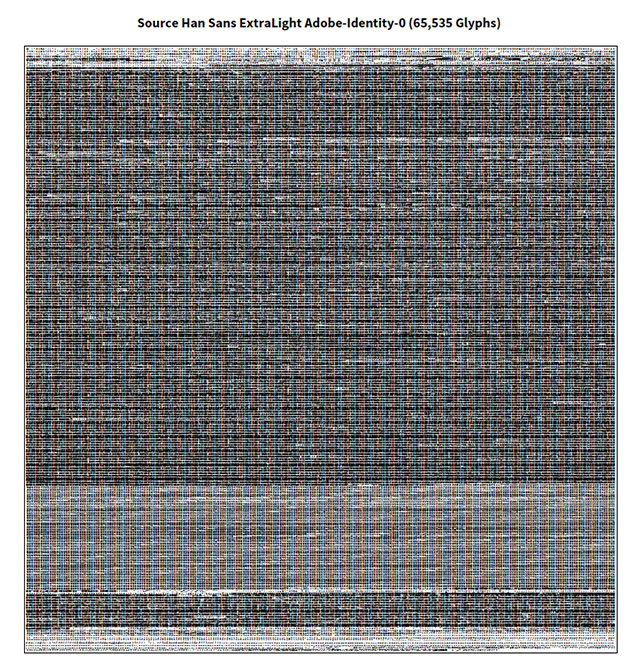Unless you have been living in a cave or under a rock, you’ve no doubt heard of Source Han Sans or Noto Sans CJK through the initial announcements from Adobe or Google who jointly developed them, or elsewhere. These two Pan-CJK typeface families, which are joined at the hip because they differ only in name, were released to the world at large, as open source fonts, on the afternoon of July 15, 2014 in the US, which was the morning of July 16, 2014 in East Asia, their target audience. Click on the preview below to view a single-page PDF that shows all 65,535 glyphs from one of these fonts:
Over the next several months I plan to publish a series of articles on this blog that will detail various aspects of the development process that I employed for building these two typeface families. Although the subsequent articles will mention only Source Han Sans by name, they also pertain to its twin, Noto Sans CJK.
One of the more important themes that will ripple through all of the articles will be the extent to which Unicode played a role in the development process, and which made the entire development cycle smoother than if Unicode had not been leveraged. Unicode played an important role in determining the scope of the glyph set, and related to that, every glyph has a unique Unicode-based working name that drove several processes, such as CMap resource generation and OpenType feature building.
My current focus is to issue the first major update for these fonts, hopefully before the end of this month, and shortly after that I plan to kick off this series of technical articles.
I will close this article by stating what I feel is the obvious, particularly for open source fonts around which a community has formed: If any issues, however minor, are found while using the fonts, please take the time to review the Source Han Sans and Noto Sans CJK repositories to check whether it has already been reported, and if not, please do so.

